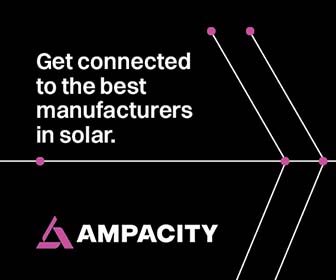Solar Thermal - A Hot Commodity
When most people in America hear about solar energy, they think about solar electrical systems, the ones that use photovoltaic panels to convert sunlight into electricity. But there is another solar technology that has been around for much longer, and it's been popular on other continents for decades. That technology is solar-thermal. In America, however, despite being 4 times more efficient, this solar technology has been overshadowed by its electrical counterpart. Solar thermal technology was invented far earlier than PV because it's ideal for what the sun already does - heat things up.
Think about how, on a sunny day, a car steering wheel gets too hot to touch. That's the general concept of how solar thermal works. Solar "collectors" absorb sunlight, turning that light into heat. From there the heat can get used for any purpose, like showers, laundry, and space heating systems. While those are the most common applications, there are countless more. Think about the breweries, wineries, and textile companies that all use solar heated water. In fact, solar thermal technologies are undergoing a sort of Renaissance, getting used in more creative and innovative ways. Think about dehumidification and desalination, and even refrigeration and water chilling. How is that all possible? Well, let's see.
The first idea you should understand is that solar thermal is not so much about producing hot water, but more about producing the heat itself. For desalination and dehumidification, you're using the heat to separate the water vapor from the rest of the fluid.
Take a grocery store for example. In order for the air to feel comfortable in a space where there are hundreds of machines simultaneously cooling off the air and heating it elsewhere, the humidity levels have to be carefully controlled. So dehumidifier systems are installed to remove the excess moisture from the air. The problem is that the moisture that accumulates in the dehumidifier somehow needs to be expelled to the outdoor air. Most commonly, natural gas is used in this case to boil off the accumulated water. This is where solar-thermal excels. Solar thermal systems provide that heat source and reduce the amount of natural gas that needs to be purchased and burned. Whole Foods Markets has been an early adopter of these systems. In this photo, you see an array of solar collectors being used to assist the dehumidifier on the roof of a Whole Foods in Hawaii. There is plenty of usable space on a grocery store roof, making dehumidification a perfect application for solar thermal.
Certain collectors are particularly good at dehumidifying because they are able to reach higher temperatures. These are called "evacuated tube" collectors. What's special about evacuated tube collectors is that there is a gap between where the sunlight gets absorbed and the outside of the collector. This gap has no air in it; it is a vacuum (hence 'evacuated' tube). Since no heat is lost in a vacuum, none of the heat gets dissipated from the tubes. This means that evacuated tubes collectors retain more heat and can reach extremely high temperatures, which is quite useful for a dehumidifying system that has to boil off accumulated water.
As with dehumidification, desalination uses the evacuated tubes to turn liquid water into water vapor. But in desalination, the water vapor gets collected, not discarded. Water from a non-potable source (like the ocean) will get heated up by solar thermal collectors, and the resulting water vapor will get piped to where it can be re-condensed into liquid water. The resulting water can be used for things like drinking and irrigation. The beauty of this system is that, wherever the sun shines, unclean water can be turned into safe drinking water. As it happens, much of the developing world that lacks access to drinking water lives in sunny, equatorial areas: Sub-Saharan Africa, Central and South America, Southeast Asia and many island nations. In his book Abundance, Peter Diamandis argues that resource scarcity is not really about a scarcity of the resources themselves, but about the scarcity of technology to access those resources. For instance, the African country of Ghana has an abundant supply of sunshine, has easy access to saltwater in the Sea of Guinea, and has plenty of unsafe surface water. Solar thermal technology can give these people access to clean drinking water by harnessing resources already available.
Lastly, let's talk about using solar thermal for refrigeration and air conditioning. These applications certainly seem the most counterintuitive of the ones mentioned so far. It doesn't make immediate sense that you would want to add heat to a system that is trying to cool things off, but that is precisely what happens. More accurately, solar heat is used to help or replace the compressor. In order for the outdoor unit of an air conditioner to operate, the refrigerant must be at a high pressure. That is why outdoor units have compressor pumps. Unfortunately, the compressor requires huge amounts of electricity to do its job. Fortunately, solar thermal can help. As you may know, the pressure and temperature of a gas are directly proportional, so long as all other things are kept equal. A 2-liter bottle full of air has double the pressure when it is at double the temperature. Likewise, when a solar thermal system adds heat to gaseous refrigerant on its way to the compressor, the pressure is proportionally increased. This dramatically reduces the amount of electricity the compressor has to consume, and reduces your power bill. The heat keeps you cool.
From small-scale home air conditioners to industrial scale chillers, or from safe drinking water in Ghana to efficient dehumidification systems at Whole Foods, solar thermal can be used to do it all. It may be the original solar technology, but it's not your grandparent's solar technology any more.

JT Max is the Director of Operations at Apricus, a leading designer and manufacturer of solar hot water and hydronic heating products.
Apricus | www.apricus.com
Volume: 2017 March/April










.png?r=4042)

